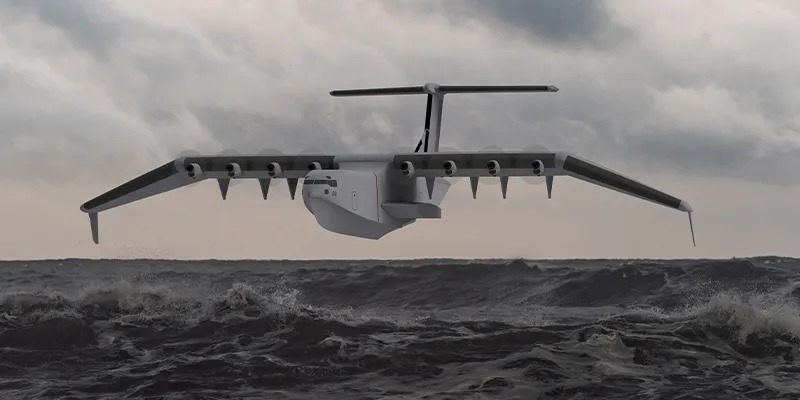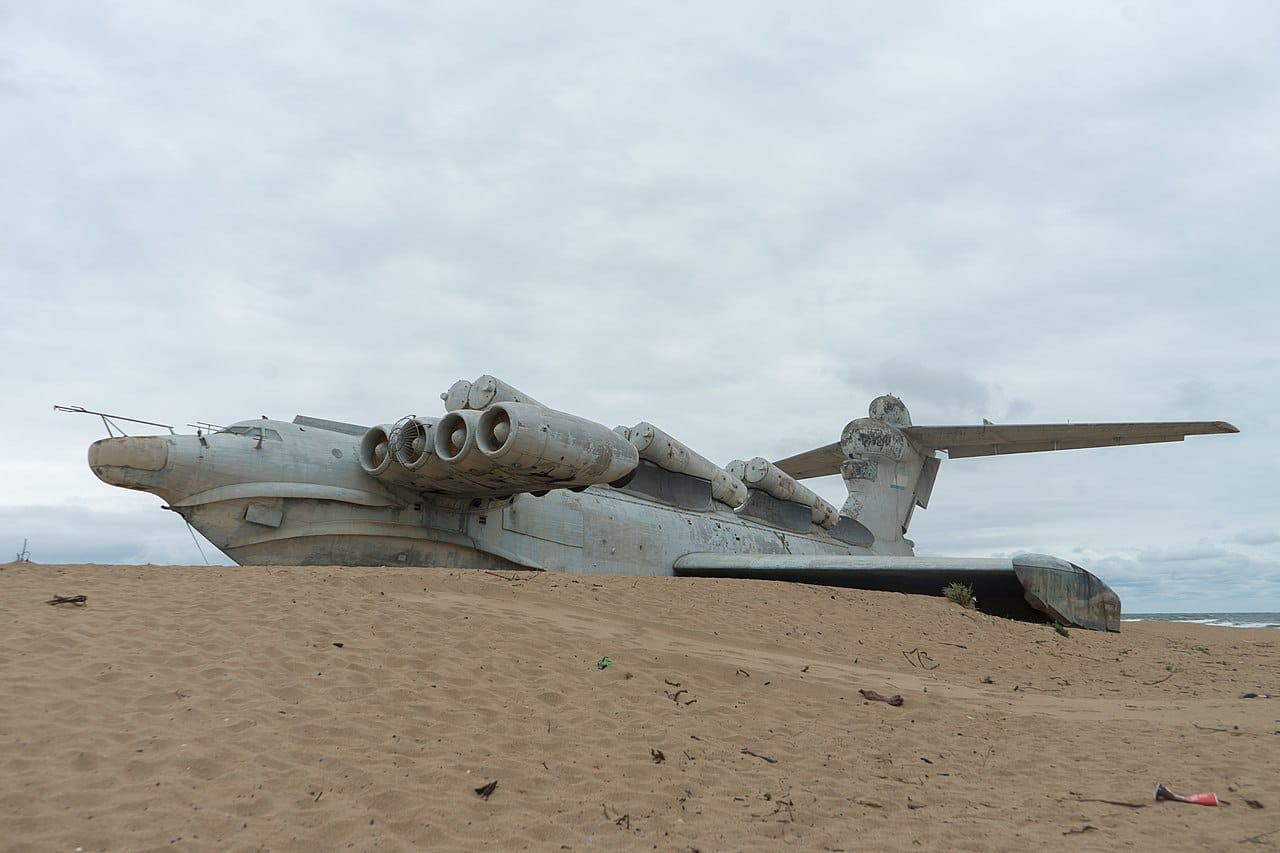‘Hybrid’ Of Warship & Warplane, US To Develop Sea-Skimming Ekranoplan Akin To Soviet-Russian Monster ‘Lun’

The US’s Defense Advanced Research Projects Agency (DARPA) has initiated the development of a rare large transport aircraft that operates on a unique scientific principle.
Awarding the first phase of the Liberty Lifter program to Aurora Flight Sciences (AFS), the craft would utilize the ‘ground effect’ of aircraft being able to fly at low altitudes just above a surface without touching it.
Called Ekranoplans, the American plane would take a leaf out of a famous short-lived Soviet-era aircraft for the same purpose and design that is known for its massive size and intimidating design.
According to a statement by AFS, a Boeing company, Phase 1 of the DARPA Liberty Lifter program “aims to design, build, float, and fly an affordable X-plane that demonstrates revolutionary heavy-air-lift capability from the sea.” The firm will be funded for six months to “reach conceptual design review of a wing-in-ground-effect seaplane.”
What Are Ekranoplans?
Ekranoplans are also known as Ground Effect Vehicles, a hybrid between airplanes and ships. They move over water without actually touching it.

The International Maritime Organization classifies them as ships. But the principle behind their operation is entirely unlike one. Their unique high-speed capabilities are achieved by skimming the water’s surface at a height of between one and five meters (three to 16 feet). It can, therefore, be said that they share some of their characteristics with seaplanes, hovercrafts, and hydrofoils.
They take advantage of an aerodynamic principle called the “ground effect.” This combination of speed and stealth – their proximity to the surface while flying makes them difficult to detect by radar – got the attention of the Soviet military, which experimented with several variants of the concept during the Cold War.
It is unclear how their ‘sea skimming’ is still prevented from being targeted by other surface ships since they are large targets that coastal or naval radars can nevertheless detect.
Submarines, however, would struggle to detect them since they do not touch the water surface and emit little sonar disturbance. Even achieving torpedo strikes would be challenging since their airframes do not touch the water, while torpedoes travel just under the surface.
The proximity of the surface at extremely low altitudes, in this case, the water, reduces the ‘drag’ effect that ensures high speed. The formation of wingtip vortices increases the efficiency of the wing. This effect, however, does not occur at high altitudes.
This low-altitude flight ensures they are invisible to radars meant for aircraft. The water operation eliminates the need for docks or runways, while the payload capacity is far more significant than regular aircraft of the same class and size.
The US Project
Aurora’s concept is a “high-wing monohull seaplane designed for affordable full-scale production and extended maritime operations, including at high sea states and in high-traffic areas.”
The concept would employ “a robust and adaptive control system designed to meet the challenge of operations to and from the sea surface and at low altitude around waves and obstacles,” the statement added.
Operating on an unusual aerodynamic principle would require different sensors, avionics, and electronics to control flight handling. The firm recognized the challenge, touching upon the complicated engineering and physics involved.
For the “half-boat, half-airplane concept,” AFS has partnered with leading marine engineering company Gibbs & Cox. This combines “aeronautics and naval design expertise to propose a modern-day Liberty ship that flies.”
DARPA stipulated a ferry range greater than 6,500 nautical miles (nm), being able to ‘hover’ with ‘flying-in-ground-effect’ in sea states up to 5 (or waves up to 13 feet in height), and a capacity to carry two US Marine Corps (USMC) Amphibious Combat Vehicles (ACV) or six twenty-foot container units.
Russia’s ‘Caspian Sea Monster’
The Soviet “Lun” was designed by Rostislav Evgenievich Alexeyev and was used by the Soviet and then Russian Navy from the late 1980s to, reportedly, the late 1990s. Eight Kuznetsov NK-87 turbofans mounted on canards powered it, kicking out 127.4 kilonewtons (kN) of thrust each.

The vessel had a flying boat hull and a sizeable deflecting plate at the bottom to provide a “step” for takeoff. It had a maximum cruising speed of around 550 km an hour. This “ship” was explicitly designed for anti-surface warfare and carried P-270 Mosquito-guided missiles.
These were housed in six missile launchers mounted in pairs on the dorsal surface of the fuselage. Missiles were guided using surveillance and tracking systems on the nose and tail.
The Soviets built only one model of this class, the MD-160, which entered service in the Black Sea Fleet in 1987. It was later retired in the 1990s. The Russians planned another version for rapid deployment as a mobile field hospital. It was never completed, as funding was cut.
In late-2020, the gigantic Soviet aircraft was hauled on a remote beach near Derbent in Russia’s Dagestan. The “Lun” was beached for being converted into a museum and a “Patriotic Park.” However, the project has now been held up owing to bureaucratic delays. The aircraft is now sustaining further damage by weathering the elements.
According to a Radio Free Europe/Radio Liberty report, the Ekranoplan’s “high-speed, low-altitude flight enabled it to pass over anti-ship mines and duck under many radar systems, enabling it to launch stealthy nuclear-missile strikes.” It added that the disadvantages include a vulnerability to bird strikes and a dangerously wide turning radius.
The size and weight of the plane exacted a massive logistical toll on its post-decommissioning transport to its current resting place. It took 14 hours for a flotilla of three tugs and two escort vessels maneuvering slowly along the shores of the Caspian Sea to drag it nearly 100 km (62 miles) from Kaspiysk naval base to Derbent.
- Questions and Answers
- Opinion
- Story/Motivational/Inspiring
- Technology
- Art
- Causes
- Crafts
- Dance
- Drinks
- Film/Movie
- Fitness
- Food
- Jocuri
- Gardening
- Health
- Home
- Literature
- Music
- Networking
- Alte
- Party
- Religion
- Shopping
- Sports
- Theater
- Wellness
- News
- Culture
- War machines and policy

